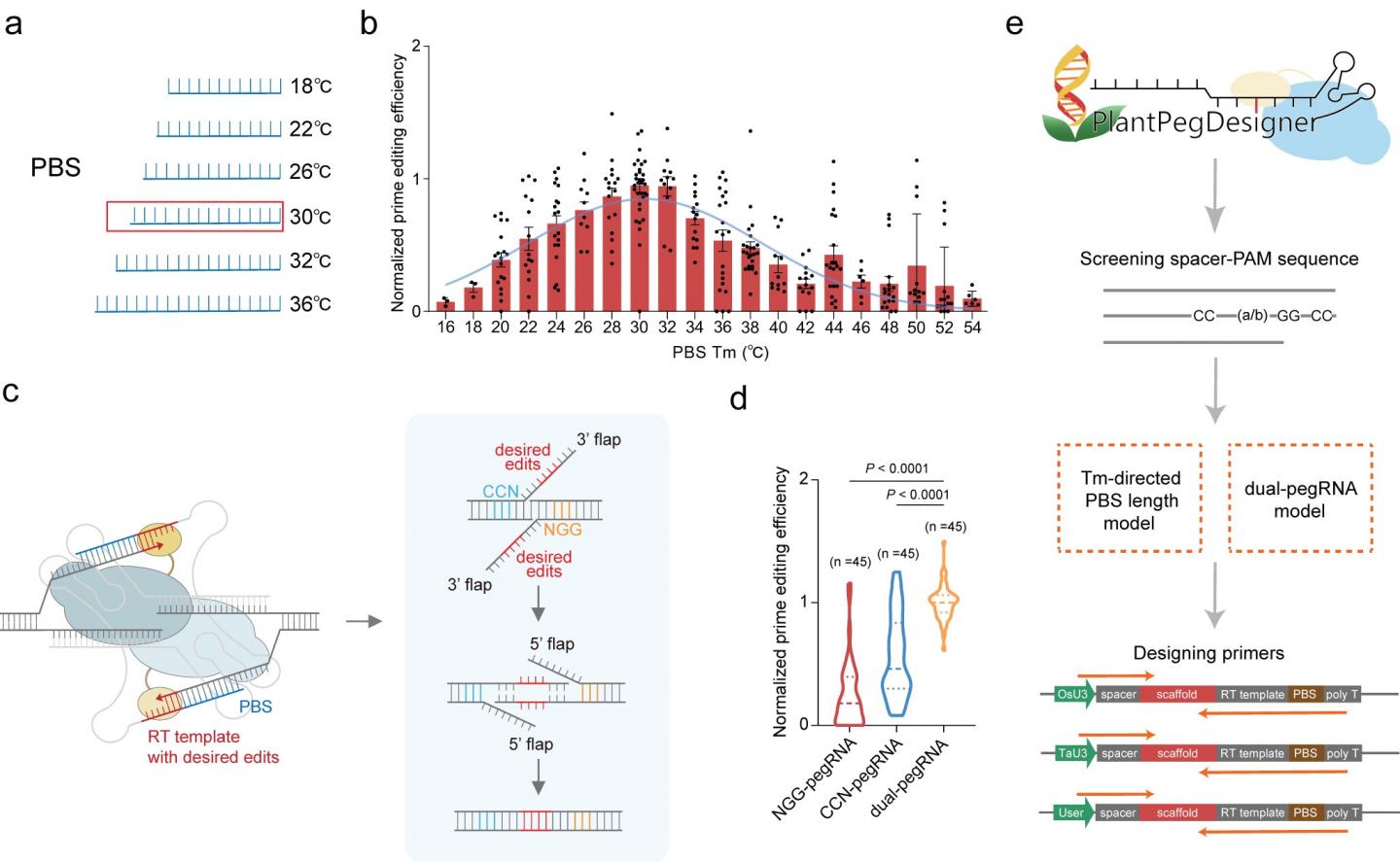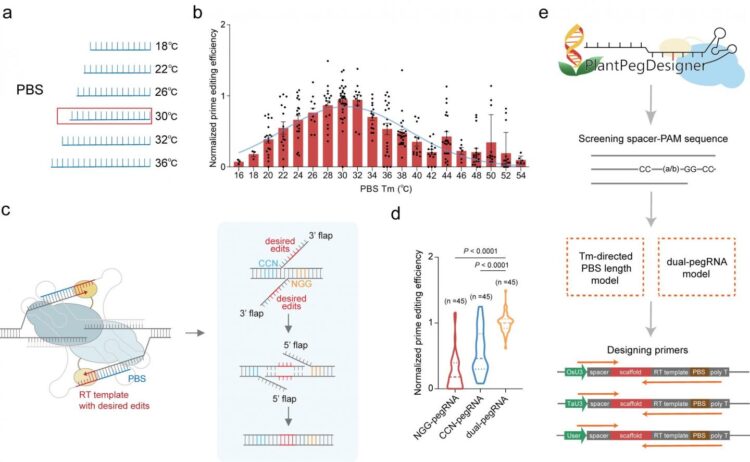
Credit: IGDB
Precision genome editing enables the precise modification of DNA in living cells, thus enabling a breadth of opportunities for plant breeding. Prime editors, developed by Prof. David R. Liu and his colleagues, permit the installation of desired edits in a programmable target site. They are comprised of an engineered Cas9 nickase (H840A)-reverse transcriptase (RT) fusion protein and a prime editing guide RNA (pegRNA).
Prime editors were previously developed and optimized as an extremely versatile editing strategy for generating programmable point mutations, insertions and deletions in rice and wheat by Prof. GAO Caixia of the Institute of Genetics and Developmental Biology (IGDB) of the Chinese Academy of Sciences along with her research team and collaborators.
They found that the editing efficiency of the plant prime editor was strongly affected by the PBS and RT template sequence, suggesting the need for optimized pegRNA designs to yield higher product conversions.
To determine principles for efficient prime editing, Prof. GAO and Prof. LI Jiayang, also of IGDB, along with their research teams, reported optimized pegRNA design strategies that maximize plant prime editing efficiency.
Since the hybridization of the primer binding site (PBS) with the non-target strand ssDNA is the initial step in reverse transcription, the researchers hypothesized that the melting temperature (Tm) of the PBS sequence (referred to hereafter as PBS Tm) is an important parameter for prime editors. By analyzing prime editing efficiencies at 18 endogenous target sites in rice protoplasts, they found that PBS Tm strongly affects editing efficiency, with maximal prime editing occurring when PBS Tm is 30 °C in rice.
In addition to identifying optimal pegRNA designs, they also introduced advances to prime editing through the use of dual pegRNAs. This strategy relies on two pegRNAs generating respective ssDNA flaps that base pair with each other in trans while encoding the same edit on both strands of the newly synthesized DNA.
This new editing approach resulted in 3.0-fold improvements in average in prime editing efficiency compared to using individual pegRNAs alone. Furthermore, the scientists generated prime editors comprised of SpG (an engineered Cas9 with expanded PAM targeting range) to expand the targeting scope of this dual-pegRNA editing strategy. Together, optimizing PBS Tm and using a dual-pegRNA strategy boosted prime editing efficiency up to 17.4-fold in rice.
Based on these two advancements, the team developed a user-friendly web application, PlantPegDesigner, to help other researchers design prime editing tools best suited for their applications.
PlantPegDesigner offers users flexibility and control of various parameters based on their individual needs. This tool recommends spacer-PAM sequences, PBS sequences, RT template sequences and also PCR cloning primers for vector construction. Compared to other web applications, PlantPegDesigner-recommended dual pegRNAs resulted in up to a 46-fold improvement in editing activity in rice.
In summary, this work simplified the design of pegRNAs, thus providing a reliable solution for efficient prime editing in plants. The flexibility of the optimized plant prime editing system will advance both plant breeding and functional genomics research.
###
This study, entitled “High-efficiency prime editing with optimized, paired pegRNAs in plants,” was published in Nature Biotechnology online on March 25.
This research was supported by the National Transgenic Science and Technology Program of China, the Strategic Priority Research Program of the Chinese Academy of Sciences, and the National Natural Science Foundation of China.
Media Contact
QI Lei
[email protected]
Related Journal Article
http://dx.





